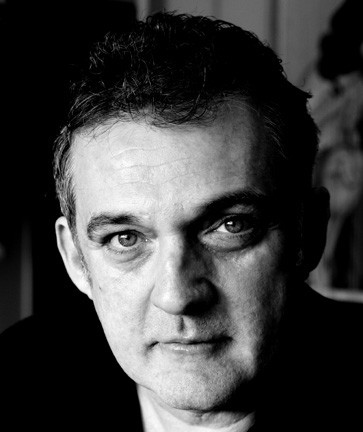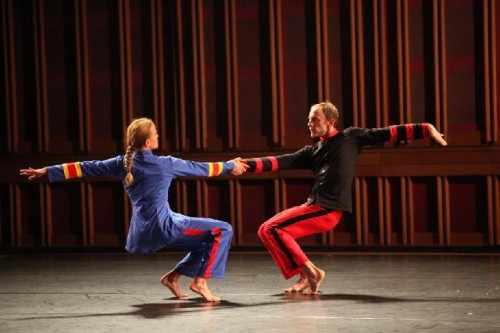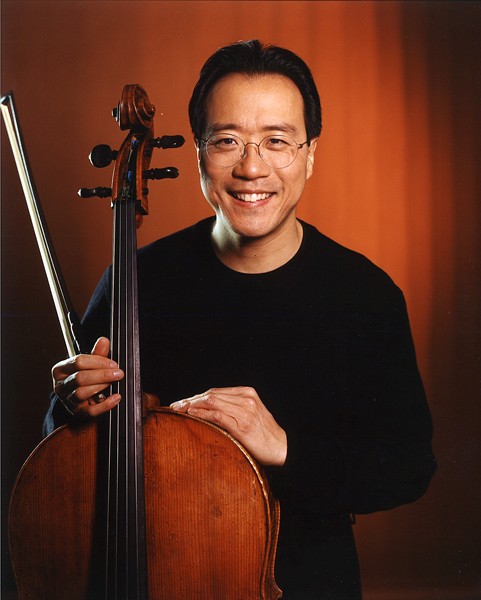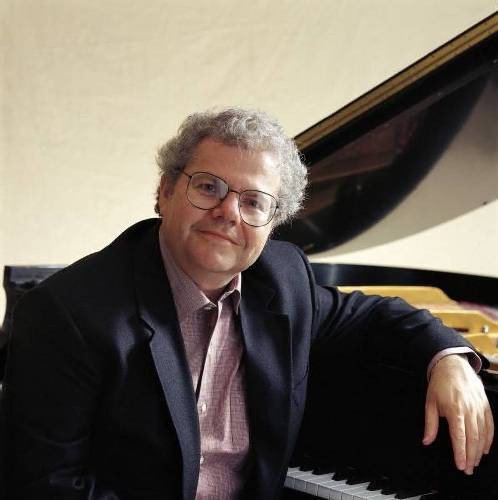Mark Morris: Two Tanglewood World Premieres
Yo Yo Ma, Emanuel Ax, Colin Jacobsen Accompany
By: Charles Giuliano - Aug 06, 2009
A Lake
Music: Franz Joseph Haydn "Horn Concerto No. 2 in D"
Gergely Madaras Conducting Fellows of the Tanglewood Center, Lauren Moore, horn
Costume Design, Martin Pakledinaz; Lighting Design, James F. Ingalls
Dancers: Craig Biesecker, Samuel Black, Elisa Clark, Lauren Grant, David Leventhal, Laurel Lynch, Dallas McMurray, Maile Okamura, Noah Vinson, Jenn Weddel
Visitation (World Premiere)
Music: Beethoven "Sonata No. 4 in C for cello and piano, Opus No. 102, No. 1"
Yo Yo Ma, cello, Emanuel Ax, piano
Costume Design, Elizabeth Kurtzman; Lighting Design, Nicole Pearce
Dancers: Craig Biesecker, Joe Bowie, Rita Donahue, John Heginbotham, Dallas McMurray, Maile Okamura, Noah Vinson, Jenn Weddel, Julie Worden, Michelle Yard
Candleflowerdance
Music: Igor Stravinsky "Serenade in A"
Ingrid Keller, piano (TMC Fellow)
Costume Design, Katherine M. Patterson; Lighting Design, Nicole Pearce
Dancers: Craig Biesecker, Rita Donahue, Lauren Grant, John Heginbotham, Brandon McDonald, Julie Worden
Empire Garden (World Premiere)
Music: Charles Ives "Trio for Violin, Cello and Piano"
Yo Yo Ma, cello, Emanuel Ax, piano, Colin Jacobsen, violin
Costume Design, Elizabeth Kurtzman; Lighting Design, Nicole Pearce
Dancers: Craig Biesecker, Samuel Black, Joe Bowie, Elisa Clark, Rita Donahue, Domingo Estrada, Jr., Lauren Grant, John Heginbotham, David Leventhal, Laurel Lynch, Brandon McDonald, Dallas McMurray, Maile Okamura, Julie Worden, Michelle Yard
Tanglewood Music Festival
Seiji Ozawa Hall
August 5, 2009
The decision to move the now annual performances of the Mark Morris Dance Group from the preseason has proved to be brilliant and inspiring. It locates this renowned company into the heart and soul of the Tanglewood program. Where it belongs.
Of course this begs the question as to why Mark Morris is the only contemporary choreographer to be so honored. Just up the road the world's greatest dancers regularly appear at Jacob's Pillow. The answer may be twofold. On the one hand Morris is the most marketable marquee name in dance. Another argument is that few contemporary companies have a more intimate relationship with classical music.
That point was well conveyed last night with two world premiers that were sublimely accompanied by Yo Yo Ma on cello and Emanuel Ax on piano. For the first piece "Visitation" they performed Beethoven and then were joined by Colin Jacobsen on violin to play Charles Ives accompanying the dance "Empire Garden."
Just having Ma and Ax perform together, as they often do, would be more than enough to fill Ozawa Hall, but combining them with the dances by Morris, two world premieres no less, was just phenomenal. The audience was utterly enchanted.
Having enjoyed seeing Morris on a number of occasions over many years it is still a conundrum as to just where to locate his work. To what degree is the choreography embedded in the classical traditions of ballet? How might one think of him as contemporary or cutting edge? Also, what has happened to the humor and deconstruction of the classics such as the hilarious "Hard Nut" which is a playful sendup of that chestnut "The Nutcracker?" We also very much miss seeing Mark on stage. Today it is all too obvious why he no longer dances. In his prime, even at the end when he was losing the battle of the bulge, it was always riveting to see his fluid and at times satirical movements.
At some point in the arc of his artistic development he appears to have lost interest in narratives. The work became more abstract and focused on the visual impact of pure movement. The company evolved with a vocabulary of unique movements with a locus on surprise. While we came to expect the unexpected that may have devolved into a paradigm where the oddity becomes the norm. One comes to know the signature steps and moves of a company. If you see them often enough there is a subliminal response and freshness hovers on the academic. The challenge is how to break out of that by continuing to push the envelope. The danger is that success is its own demise when audiences file in and applaud accepting whatever is put in front of them. But risk taking, and the chance of losing the base, is daunting when there is a large company and its enormous overhead.
In that sense the program last night was challenging but also incremental. One might feel elements of growth and change but mostly in terms of nuance and refinement. Rather there was the delight of seeing a well groomed company that executes his mandates with precision and passion.
The evening appeared to be divided into the polarities of his approach to choreography. The first half of the program may be described as classical and the second as modernist.
The first selection "A Lake" set to Haydn's "Horn Concerto No.2 in D," featuring the wonderful playing on French horn by Lauren Moore, revealed the company as rooted in the traditions of classical ballet. This was made visually apparent by the costumes designed by Martin Pakledinaz. There were soft, pastel colored skirts for the women and knee britches for the men. This gave emphasis to the lifts, leaps, partnering and turns that were appropriate to Haydn. The dance was in perfect harmony with the soothing and delightful music. The result was quite lovely. In that sense it was a perfect opening for a program that would end on the opposite end of the spectrum.
The transition to "Visitation," a world premiere with Yo Yo Ma and Emmanuel Ax performing Beethoven's "Sonata No.4 in C for cello and piano, Opus 102, No.1," while still dominantly classical,was less formal than the Haydn. Again this was conveyed in the costumes of Elizabeth Kurtzman which had the dancers attired in shirts and pants in beige with a soft material that clung to the body and its movements. The passion of the playing of Ma and Ax visibly inspired the dancers.
After intermission we reached the tipping point with "Candleflowerdance" set to "Serenade in A" by Stravinsky. As the title proclaims there were candles and flowers on the expanded stage. The music was superbly performed by the pianist Ingrid Keller. As a signifier that we progressed into modernism there was more color in the costumes by Katherine M. Patterson. Again the dancers wore shirts with short sleeves and pants. There were a few sequins sewn to the shirts that offered a hint of glitter. This ratcheting up of color was also conveyed in the more adventurous movements of the dancers. There were indeed elements of surprise in the movements which followed the jolting chords and percussive passages of the music.
By building us up through the three progressively more adventurous dances Morris was ready for the shock and awe of the triumphant and challenging new work "Empire Garden" set to the Charles Ives "Trio for Violin, Cello and Piano." Again, the costumes by Elizabeth Kurtzman boldly informed us that this is the latest and most daring statement of the company at its most experimental. There were bright rich colors and interesting variations of tunic like uniforms, with ersatz Michael Jackson like military regalia. One woman was dressed in checkerboard patterned shorts with red and yellow squares.
This proved to be a very large dance at times with 15 dancers on stage. These were seen in all possible combinations. At times it appeared less like dance in the traditional sense than twists, turns, contortions. There were a lot of upper body movements. Often one dancer seemed to push over the other. Or a group would lean and then fall in a cluster on the stage. Occasionally women were lifted and carried about horizontally. There was an element when two dances were seated on the floor, one in the lap of the other. Together they manipulated themselves in a circle movement. It was somewhat awkward to watch. It started with one pair, two men, and then was repeated by groups of pairs. There were moments when a single woman was seemingly enthroned on a platform of male dancers. Another element of surprise was conveyed when dancers progressing across the stage in profile concealed an arm exposing a jittering, fluttering hand.
All of this dissonance of movement was inspired by the music. There were passages where Ma attacked the cello with strong thrusts of the bow echoed by Ax and Jacobsen. This resulted in almost spastic responses by the dancers seemingly struck by lightning. It recalled Nijinsky's chorography for the solo of the Sacrificed One in Stravinsky's "Rite of Spring."
There was enormous applause for this last work on the program. But I found myself somewhat numbed trying to absorb and understand what I had just seen and heard. This is indeed the aspect of Mark Morris that we want to see more of. Roll over Beethoven.








